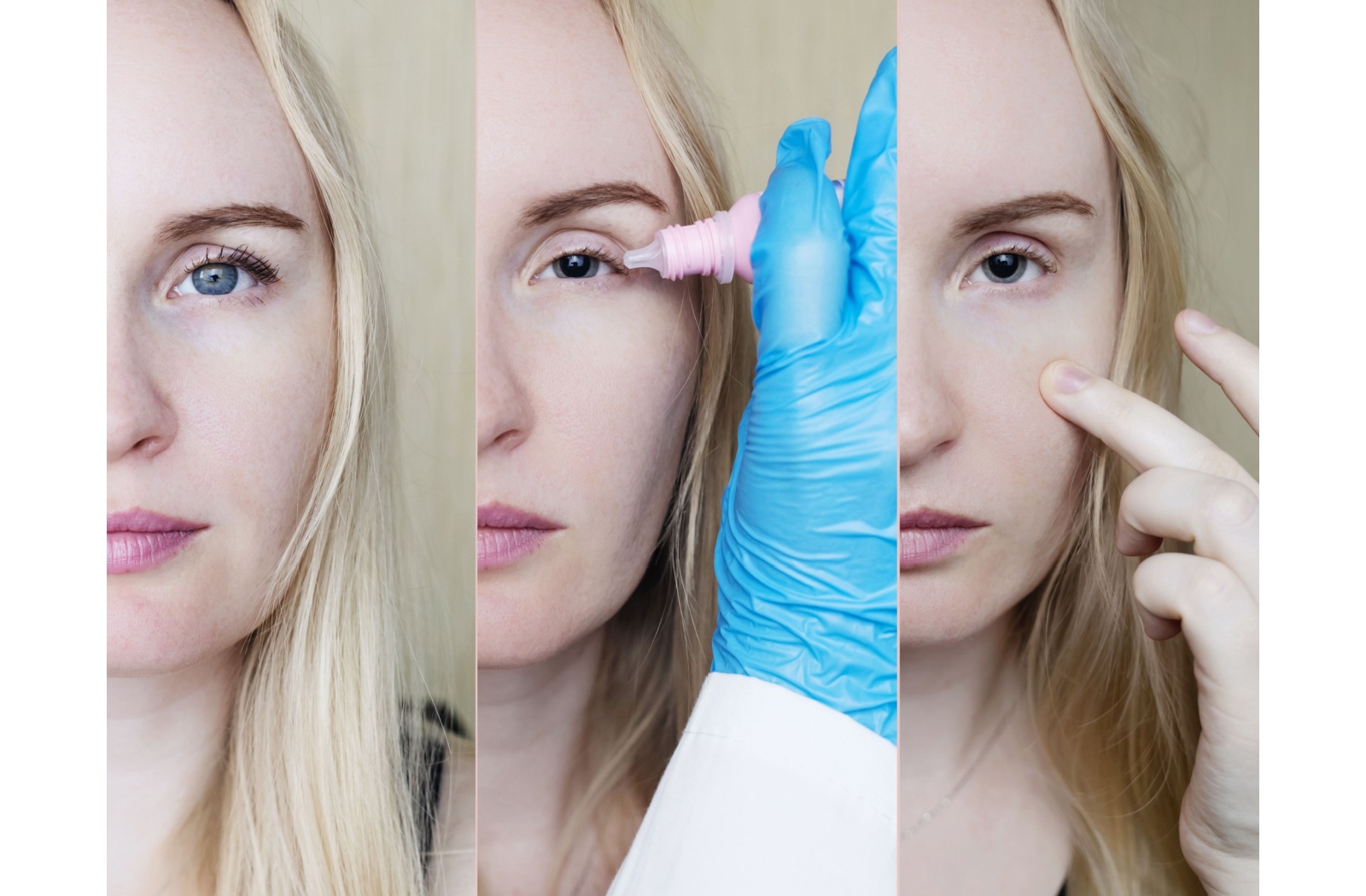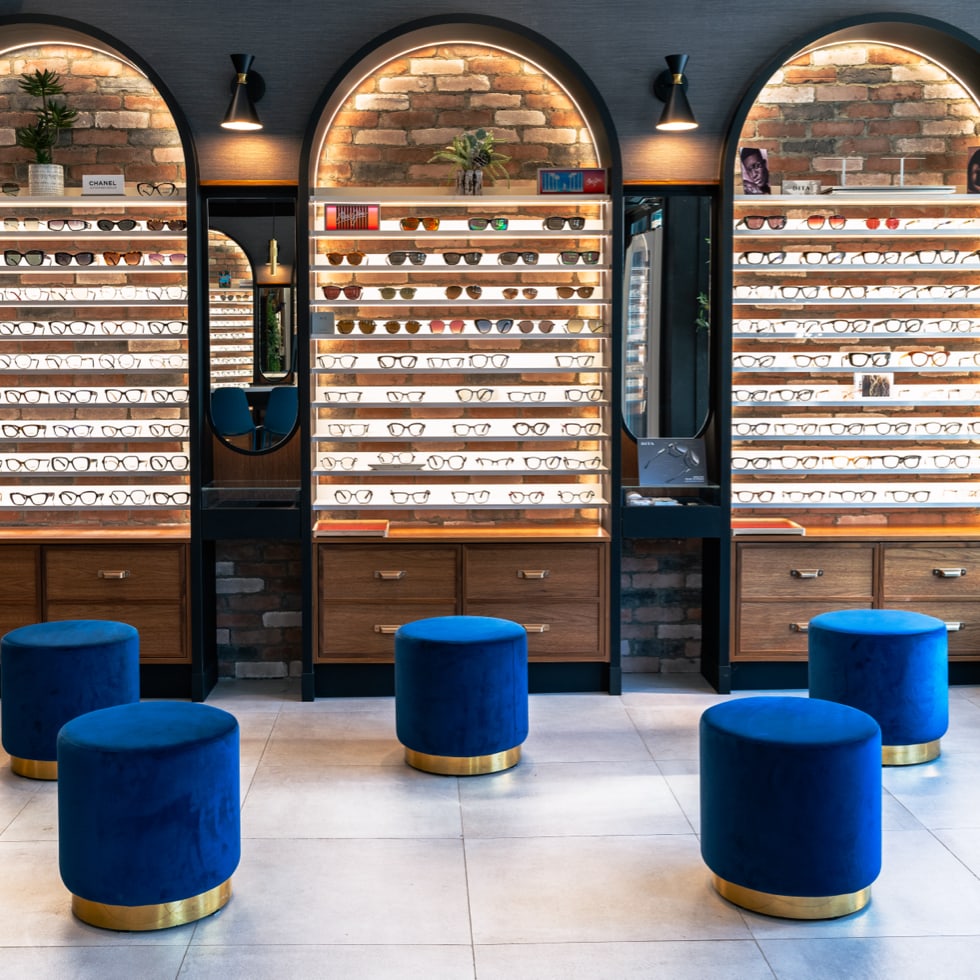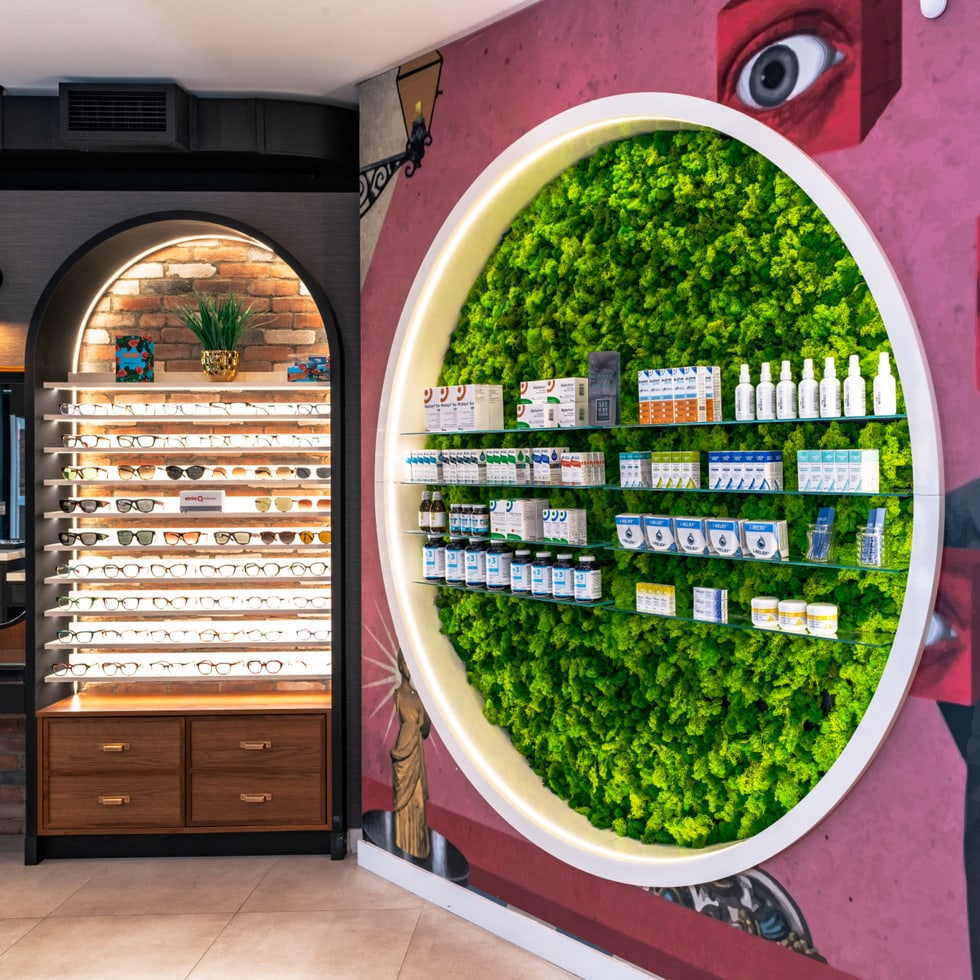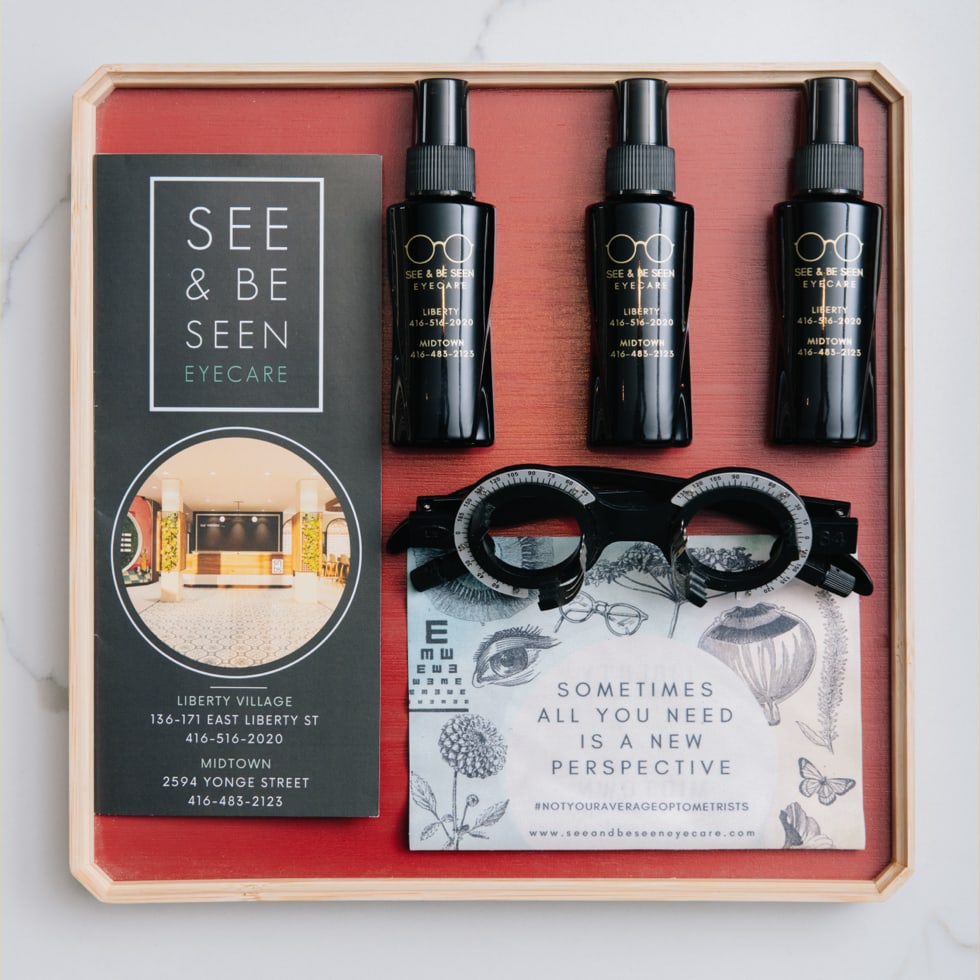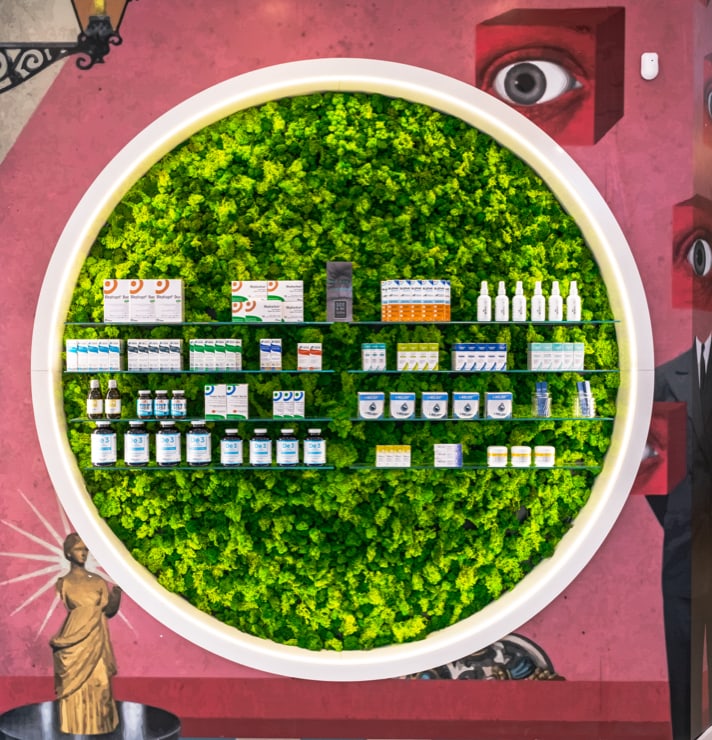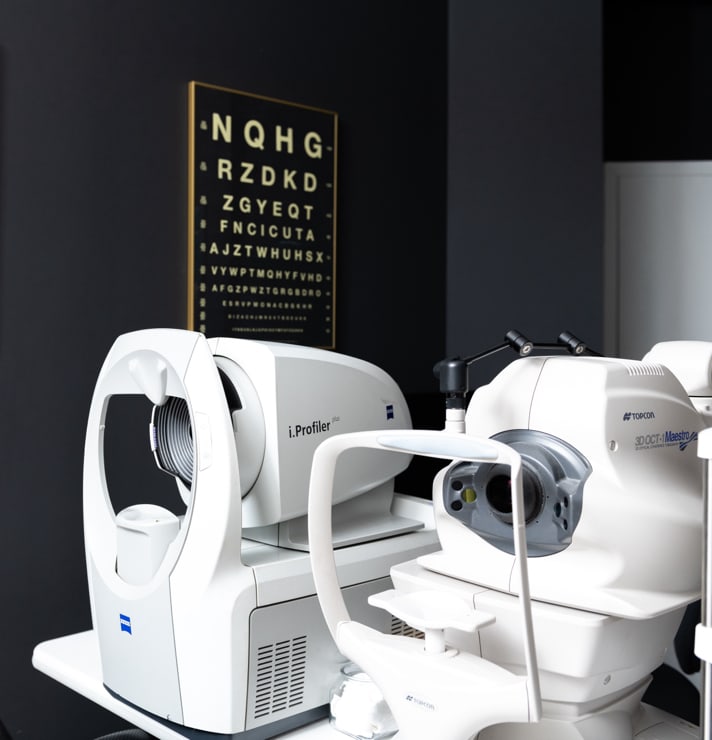Worried you won’t be able to drive after your eye exam? The good news is that most modern eye exams don’t require dilation at all, and even when they do, many people can still drive themselves home safely. Whether you’ll need a ride depends on the type of exam, your eye health, and how your eyes respond, not just the fact that you’re seeing the optometrist.
Most patients can drive themselves to and from their eye exam appointments with no issues. Advanced retinal imaging technology has transformed how we examine your eyes, making dilation drops unnecessary for routine visits.
Most Eye Exams Don’t Require Dilation — You Can Drive Yourself
Today’s eye care technology allows us to see inside your eyes clearly without dilation drops. We use sophisticated imaging equipment that captures detailed pictures of your retina and optic nerve. This means your pupils stay their normal size, and your vision remains unchanged throughout your visit.
Adult eye exams rely on retinal imaging to check for signs of glaucoma, macular degeneration, and other conditions. Children’s eye exams can often be completed using the same technology, making the experience more comfortable for young patients. Digital eye strain assessments focus on how your eyes work together and handle screen time — no dilation needed.
Contact lens fittings proceed with your natural pupil size, allowing us to see exactly how the lenses sit on your eyes. Even when we’re helping you select stylish eyewear or discussing eye nutrition, dilation isn’t part of the process.
When Your Eye Doctor Recommends Dilation & Why
Dilation isn’t a standard part of every exam, it’s a specialized tool we use when we need a wider view of your eye’s interior. Think of it as looking through a larger window to see more detail. We only recommend dilation when there’s a specific clinical reason that helps protect your long-term vision.
New or unexplained vision changes often require a closer look at your retina and optic nerve. Symptoms like flashes, floaters, or sudden blur can indicate changes that need immediate attention. If you have a history of eye conditions requiring ongoing monitoring, dilation helps us track any progression.
Strong family history of retinal disease or glaucoma may prompt us to use dilation for a more thorough examination. Emergency eye care situations sometimes require the wider view that only dilation can provide. When our imaging shows something that needs closer examination, dilation gives us that detailed perspective.
How Dilation Actually Affects Your Vision
Dilation drops temporarily relax the muscles that control your pupil size, making them stay open wide. This creates specific visual changes that are temporary and completely normal. Your eyes aren’t damaged, they’re just responding to the medication as expected.
You’ll notice blurry near vision when trying to read text messages, books, or anything close up. Light sensitivity is common since your pupils can’t shrink to filter bright light naturally. Distance vision typically remains functional, which is why many people can drive comfortably.
These effects usually last 4-6 hours, though some people return to normal vision sooner. The timeline varies based on your eye colour, age, and how quickly your body processes the drops.
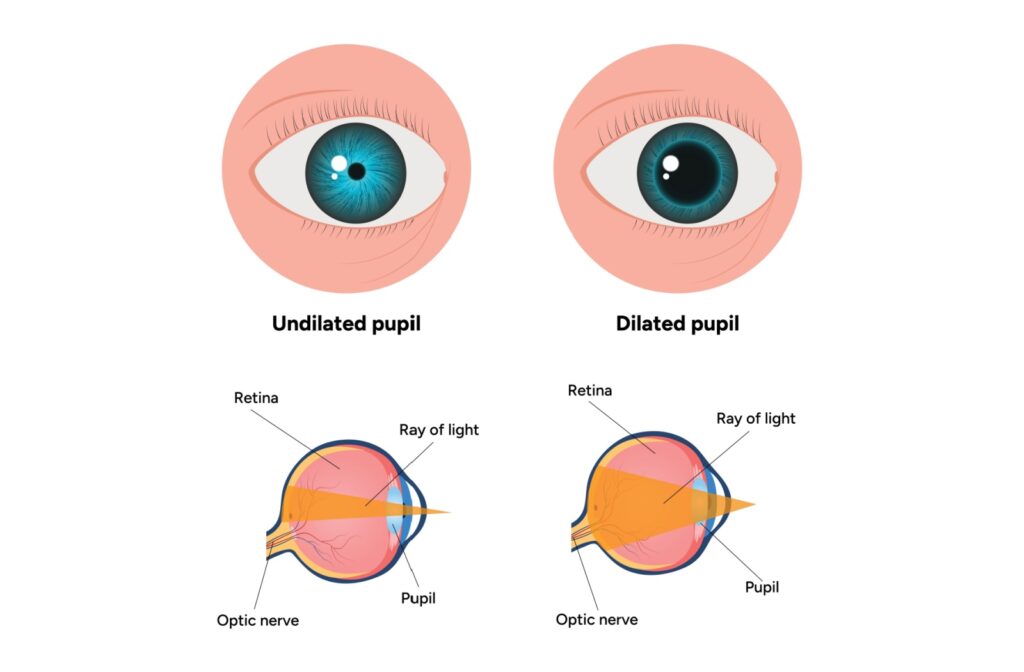
Real Driving Guidelines After Dilation
Your ability to drive safely after dilation depends on several personal factors, not a blanket rule. Many patients drive themselves home without any issues, while others prefer to have someone pick them up. The key is making an informed decision based on how you feel and the driving conditions you’ll face.
You Can Likely Drive If You Have
- Previous experience with dilation and know how you respond
- Good distance vision during your exam
- Comfortable lighting conditions for your drive home
- Quality sunglasses to manage light sensitivity
Consider Arranging a Ride When
- This is your first dilation experience and you’re unsure how you’ll respond
- You feel uncomfortable with the light sensitivity during your exam
- You need to drive in bright sunlight immediately after your appointment
- You have any concerns about your comfort level behind the wheel
Modern Alternatives Reduce Dilation Needs
Advanced imaging technology has revolutionized comprehensive eye care. Wide-field retinal cameras capture detailed images of your eye’s interior without requiring pupil dilation. OCT scans provide cross-sectional views of your retina layers, giving us incredible detail about your eye health.
These tools help us manage myopia in children and adults, evaluate dry eye treatment progress, and assess overall eye health. When we’re helping you select eyeglass frames, we can take precise measurements and assessments without affecting your vision. IPL & RF dry eye therapy consultations proceed normally since we can evaluate your tear film and eyelids without dilation.
Blepharitis treatment planning and eye disease monitoring often rely on this imaging technology rather than dilation drops. The result is a more comfortable experience that doesn’t disrupt your day.
Plan Your Eye Exam With Confidence
Don’t let concerns about driving prevent you from scheduling your eye exam. When you book your appointment, ask whether dilation is likely based on your eye health history and the type of exam you need. This helps you plan your day accordingly.
Morning appointments often work well if dilation is needed, giving your eyes time to return to normal before evening activities. Bring sunglasses to every eye exam — even if dilation isn’t planned, you’ll be prepared if circumstances change. Consider timing your appointment when you don’t have important meetings or detailed work scheduled immediately after.
And remember: most eye exams do not affect your ability to drive afterward — especially when advanced retinal imaging is used instead of dilation. At See & Be Seen Eyecare, we make sure you know what to expect before your exam begins, so you can plan your schedule comfortably.Book your eye exam at either of our convenient Toronto locations — Liberty Village or Midtown — and take the next step toward clearer, healthier vision.

